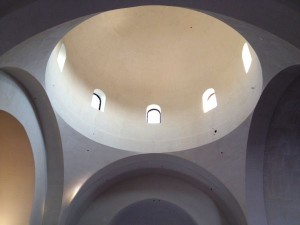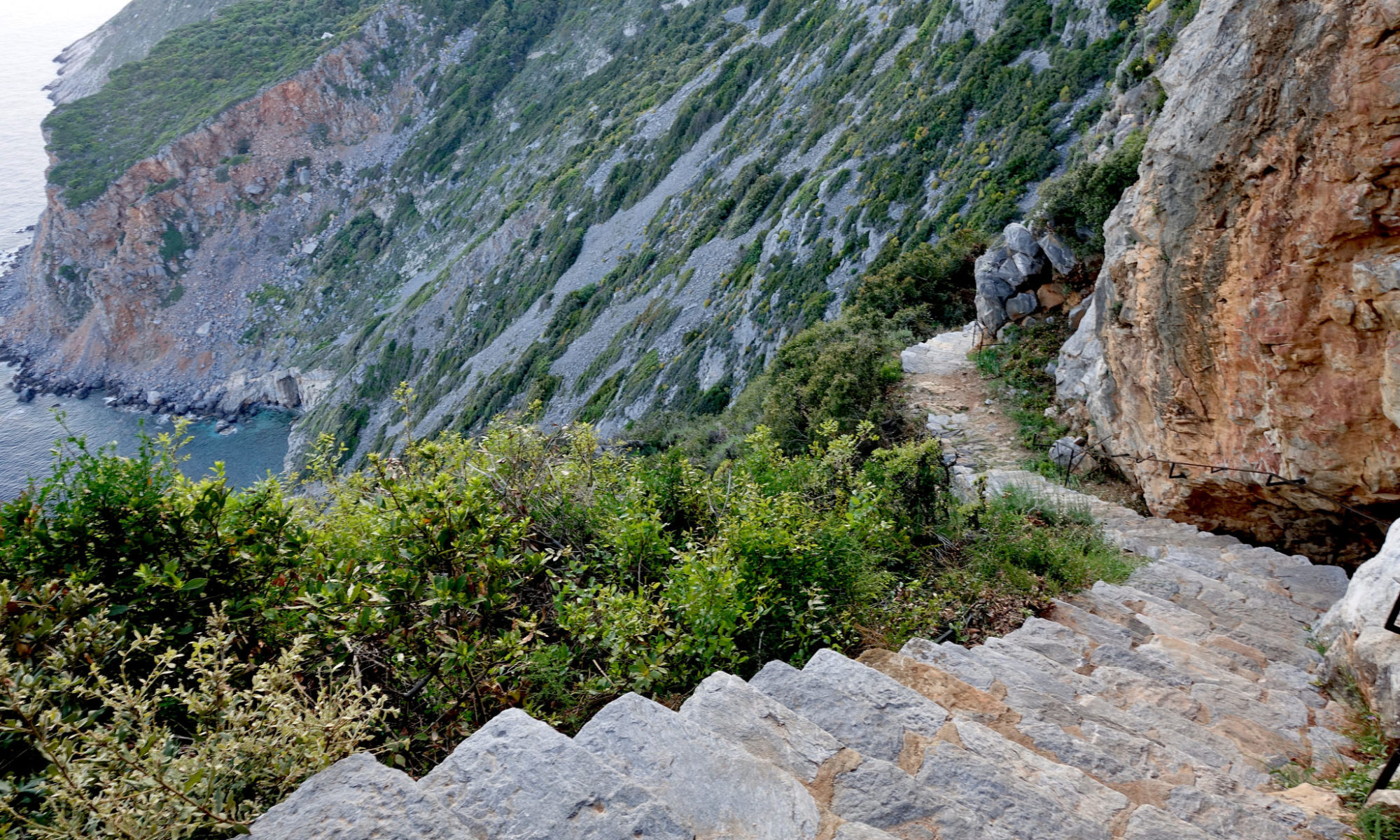 Trying to define the Byzantine style only from an architectural point of view one May sorely miss its deep spiritual meaning. Looking only superficial one might think that this style is stuck in thousand year old formal representation‚ not keeping the pace with all the discoveries in the science and the psychology of the building. But I am asking you: how many times visiting a gothic building you felt that the acute angles and sore heights are quite intimidating‚ not protective? How many of the modern‚ original and impressive temples designed by famous architects are not helping you find peace to pray? On the other hand‚ the architectural language employed by Orthodoxy is aimed to induce the opposite‚ to produce a feeling of protection and familiarity that can render anyone entering the church into a state of peaceful prayer.
Trying to define the Byzantine style only from an architectural point of view one May sorely miss its deep spiritual meaning. Looking only superficial one might think that this style is stuck in thousand year old formal representation‚ not keeping the pace with all the discoveries in the science and the psychology of the building. But I am asking you: how many times visiting a gothic building you felt that the acute angles and sore heights are quite intimidating‚ not protective? How many of the modern‚ original and impressive temples designed by famous architects are not helping you find peace to pray? On the other hand‚ the architectural language employed by Orthodoxy is aimed to induce the opposite‚ to produce a feeling of protection and familiarity that can render anyone entering the church into a state of peaceful prayer.
The Byzantine style tries to create an island of harmony secluded from the outside world‚ a replica of the promised Kingdom‚ where saints and martyrs dwelling with the angels give praise to God. This is the Triumphant Church‚ depicted by the iconographers on every inch of the walls. We‚ the Militant Church‚ are inspired and strengthen by their presence as we enter‚ participate or leave the church.
When stepping into an Orthodox Church the first space we encounter‚ the Exo-narthex‚ the outside colonnade‚ is just a announcement of the entrance‚ a place of awareness and gathering. Once we enter in the Narthex‚ a place considered not yet restored‚ we are asked‚ through the presence of the Old Testament scenes of the murals‚ to leave the outside world and our earthly thoughts behind us.
The next step is leading us into the place of prayer‚ the Nave‚ where the saints on the walls invite all the Christians to participate in the Mysteries of our Church. The Cradle vault (the half cylinder ceiling of the nave) and the groin vaults of the lateral colonnades (intersection of two half cylinders) are a reminder of the motherly protection of the Theotokos as well as the Arch of the Covenant between God and Noah.
From a simple cross plan‚ the building blooms into a cross in square play of volumes. Following a brilliant architectural layout dating back to the 9th century‚ the Dome is placed in the center of the liturgical space‚ from where Christ Pantokrator‚ the Creator of all things‚ is blessing the whole creation‚ and holds the church fast from Heavens. Underneath Him‚ the angels and prophets are announcing His second coming‚ while the four Evangelists‚ depicted on the pendentives (the spherical triangles at the base of the dome)‚ spread His Gospel in all the four corners of the world.
The rounded apses on the sides of the Nave are the places that the monks‚ starting at Mount Athos‚ have dedicated to the choirs. The alternative responses (antiphony) coming from both choirs adorn the long vigil nights‚ Sundays or regular weekday services. The form of the apses with the conch on the top naturally amplifies the voices. The Stasidia that are furnishing the apses are part of the church architecture‚ as they were the only sitting allowed in church. Many times the stasidia are also found alongside the walls of the Nave.
The most sacred place of the church‚ the Altar‚ is seen the first moment when one enters the nave‚ being the highest place in the church. The altar is always oriented toward the East in anticipation of Christ’s return.
The altar has several symbolical meanings. First the altar is the dwelling place of God‚ the continuation of the Holy of the Holies from the Jewish Temple. This is the place were the Holy Mysteries take place and the grace of God is imparted to all the people. The altar is also Golgotha‚ the Hill of the passions‚ the place were Christ sacrificed Himself for the life of the World‚ that we remember when we bring the offerings of bread and wine in the altar during the Great Entrance. Finally the altar is also the Tomb of Christ exulting life to the entire world. From the Altar’s walls‚ the Holy Fathers are concelebrating with the priest the Holy Liturgy‚ and‚ above them all‚ the Mother of God‚ the Theotokos‚ is opening her arms to embrace us all.
Between the Altar and the Nave‚ at the border between the two worlds‚ stands the Iconostasis wall as an indication that the Mysteries of God are not to be seen with earthly eyes. It is the most specific element of the entire byzantine architecture‚ not missing from any Orthodox church no matter how traditional or not the building is.
All these Byzantine church elements are also part of our new church that is almost complete now‚ waiting to open its doors to us all. We all worked hard as a parish to see it finished. But looking back the last four years I understood that building a Byzantine church nowadays is not an occasion for vanity but a totally humbling experience because it takes more than human efforts to see it through. Working form the very beginning with resources far from being realistic‚ we have witnessed many miracles along the way. Without them we would still be looking at our dream on a colored piece of paper. We are not finished yet‚ there is still much to do. But give praise to God‚ He was‚ He is and He will be always with us!
Presbytera Mirela Tudora
The Byzantine Style - By Presbytera Mirela Tudora‚

I am sorry to intrude… Its not only the architectural work that makes a Christian find piece to pray… I happen to be a professional Byzantine Icon artist and I tell you that our work plays a very important role as well… If the Architect knows what he/she is doing because a byzantine church has a specific layout upon which we then work on with Agiokatataksh… everything has a specific separate place and nothing else can be placed there!
I hope I didn’t consume much of your time. The photo of this article seems perfect. The architect certainly knew what to do!
My congratulations!
And remember give praise to God‚ He was‚ He is and He will be always with us!
Kind regards
Ioannis Afentoulis